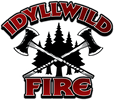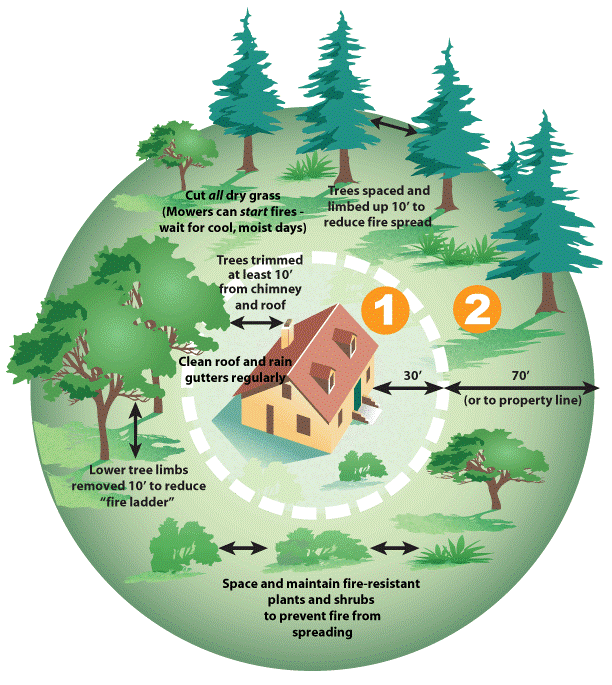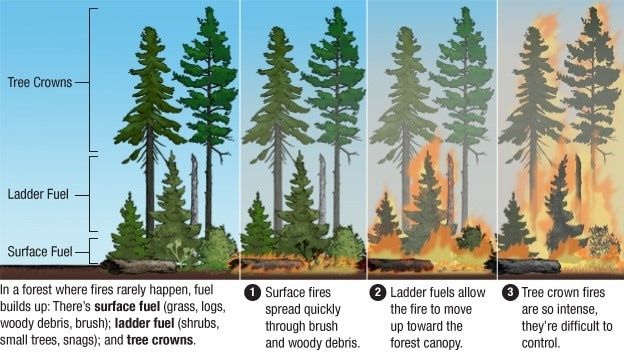Defensible Space
Hazard Fuels Reduction and Abatement
Fuel reduction has been a proven means of mitigating wildfire hazards, these important measures help to lessen catastrophic fire and its threat to the public and firefighter safety, and also greatly reduce damage to property and the environment. The objective in fuel reduction is to remove enough fuel so that when a wildfire burns, it is less severe and can be more easily managed and suppressed. When fuels grow and accumulate, they allow fires to burn hotter, faster and with greater flame lengths. When fire encounters areas of continuous brush or small trees it can burn these “ladder fuels” and may quickly move from a ground fire into a crown fire.
Hazardous fuel reduction generally requires the reduction of surface and ladder fuels. It may also require a “thinning out” of dense tree stands, preserving mature sized trees in most instances. These fuel reductions can be accomplished using fire, biological methods, and mechanical treatments to remove or modify fuels. Clearing grasses, thinning trees, removing underbrush, and limbing up trees and shrubs is the goal. In large forested areas fuel reductions are done using hand crews and machines. These cut fuels are generally ground into chips or piled and burned during the winter. Biological methods such as grazing are rarely used in populated areas.
Hazardous fuel reduction generally requires the reduction of surface and ladder fuels. It may also require a “thinning out” of dense tree stands, preserving mature sized trees in most instances. These fuel reductions can be accomplished using fire, biological methods, and mechanical treatments to remove or modify fuels. Clearing grasses, thinning trees, removing underbrush, and limbing up trees and shrubs is the goal. In large forested areas fuel reductions are done using hand crews and machines. These cut fuels are generally ground into chips or piled and burned during the winter. Biological methods such as grazing are rarely used in populated areas.
|
Defensible space: (Within 30ft. of your home or other structures, or to the property line)
Reduced Fuel Zone: (30-100ft. from all structures or to your property line)
|
Additional fuel reduction requirements:
- Clear all flammable vegetation, trash and other combustible materials 10ft. from propane tanks.
- Address numbers shall be displayed in contrasting colors 4 inches min.
- Stovepipes and chimneys must have metal screens ½” maximum openings.
Other Recommendations:
- Clear 10ft around all woodpiles, lumber, scraps. Remove flammable materials stored near structures, under decks or overhangs.
- Clear Vegetation 10 ft. from sides and 15 ft. above all driveways and turnarounds.



